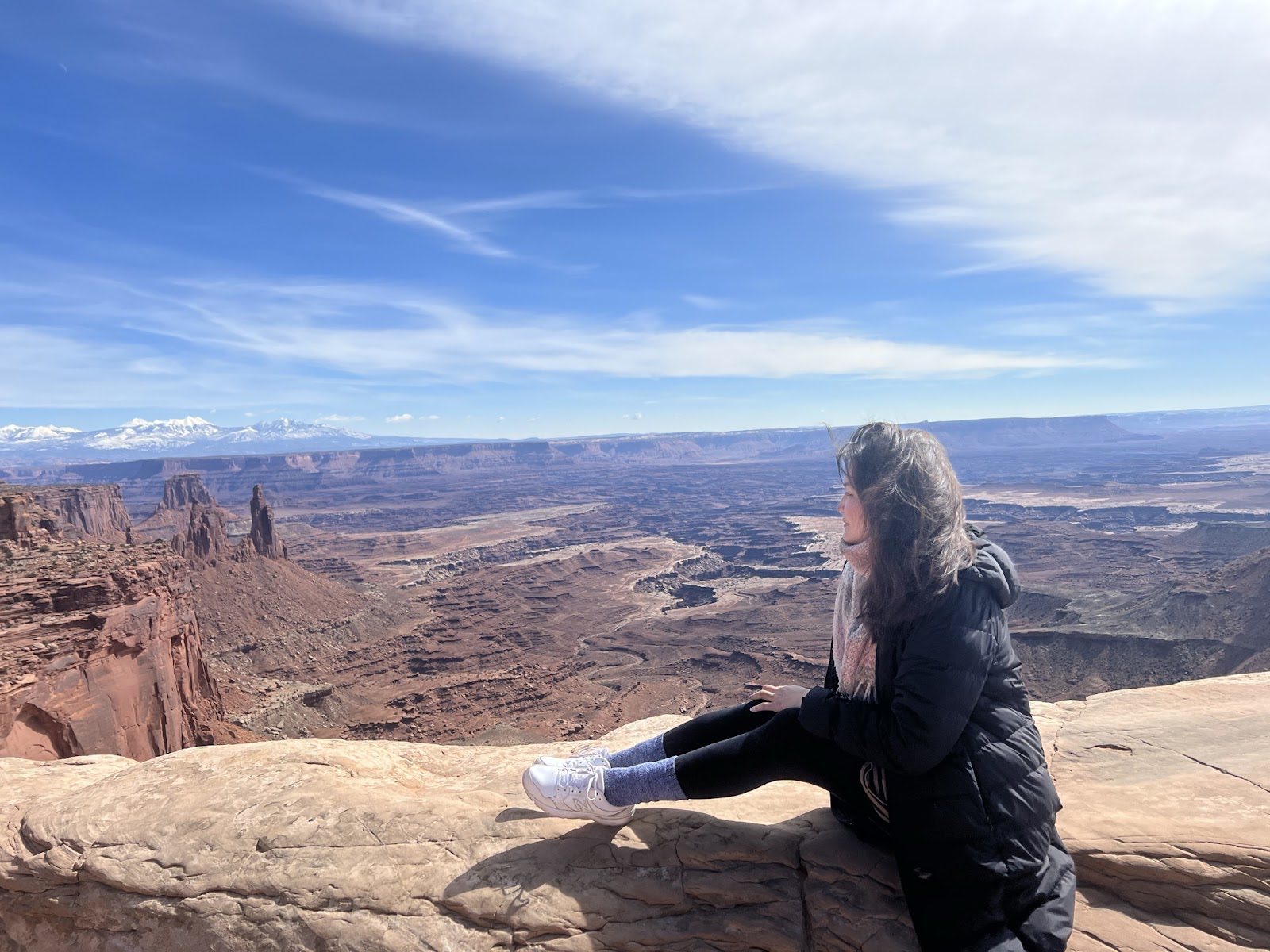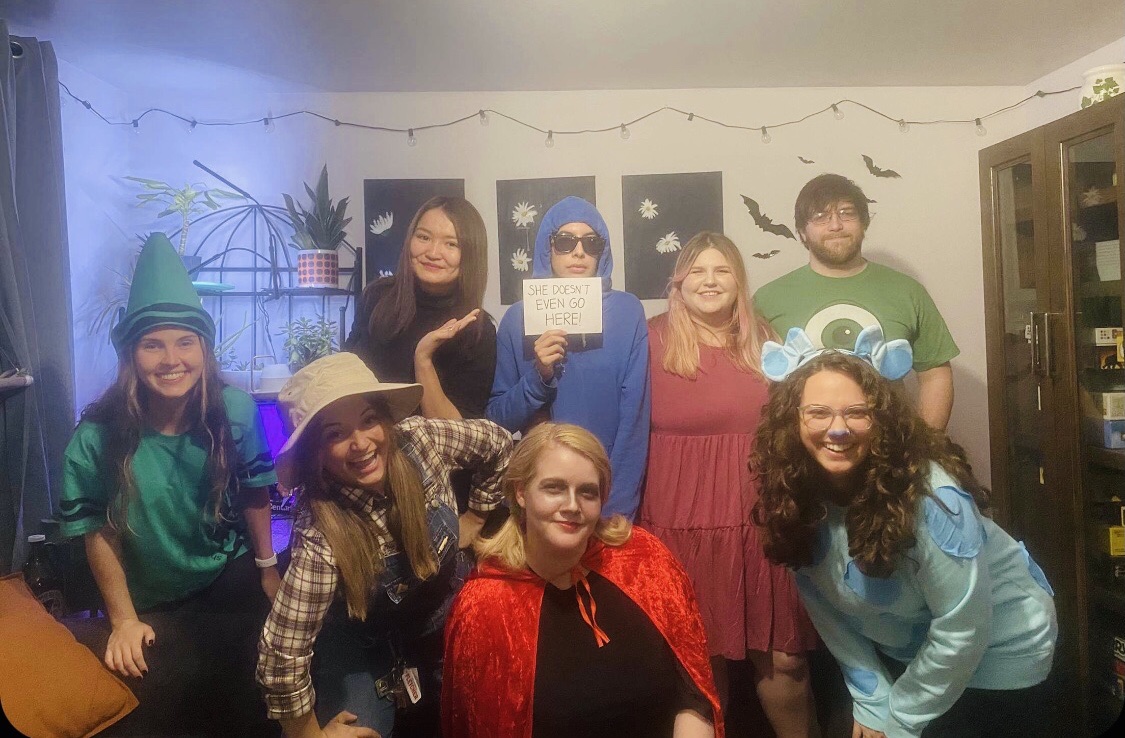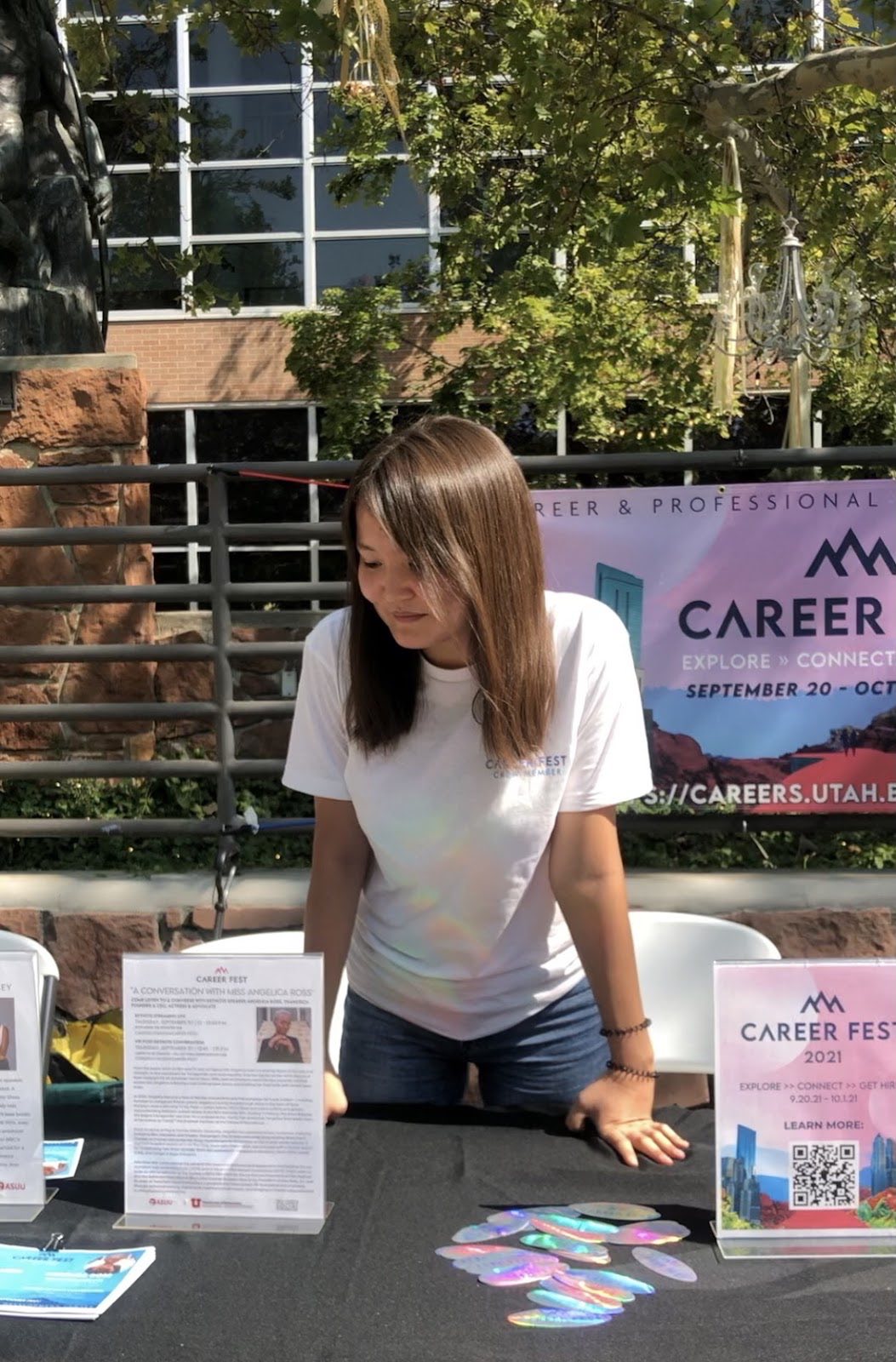Hi, my name is Delyash. I finished my bachelor’s degree in Moscow where I studied Human Resources Management in Financial University. Last year I got accepted to two master’s programs in the U.S with full funding offers through graduate assistantships. My master’s program is called Educational Leadership and Policy with Emphasis on Student Affairs, and I work as a career coach at the University of Utah in Salt Lake City. If you are interested in getting full funding for your graduate studies, read this article and share it with friends!
When I was in high school I was rejected twice at the final round of FLEX (Future Leaders Exchange) program. Since then, I’ve been thinking about studying abroad, but I come from a remote and low-income region in Russia, the only educational opportunity for doing a bachelor’s for me back then was to study in Moscow. I dropped out of my first bachelor’s program because I had issues with adapting to a new environment and struggled with mental health. I went through depression, lost one year, and started over.
During my junior year of college, I also applied for an exchange semester in France, but I got rejected again because I almost failed my math exams. On top of that, I applied to more than 15 volunteering projects in Europe in total, and eventually got selected for 4 of them in France, Germany, and Italy. I sent endless applications when I was looking for a job during my final year, and it felt so hopeless, and this whole process was really nerve-racking because I am naturally shy and introverted, so I worked a lot on my communication, teamwork and self-presentation skills. I ended up landing internships in 2 top tech companies in Russia. And after graduation, I accidentally found out about a perfect funding opportunity to study in the U.S that matched my goals, interests and needs. I wanted to share my story because it’s far from perfect.
Become immune to rejections. I learned valuable lessons from rejections. Be proactive. I know, it may sound cheesy, but it’s so important. Please, if you dream about international opportunities, don’t give up on your dreams! It’s not easy, but it’s worth trying.
These are the most common requirements for applying to master’s program’s in the U.S:
Resume or Curriculum Vitae (CV) – 1-2 pages max.
~ 2-3 Recommendation Letters (academic and professional)
Statement of Purpose (motivational essay)
Transcripts in English
These are some additional requirements you may encounter:
Writing Sample
GMAT or GRE
Diploma evaluation
Portfolio for creative majors
It’s relatively easy to get into a graduate school in the U.S, there is much less competition compared to undergraduate programs. The question is – how to fund your studies, especially if you are from a developing country and have limited financial resources?

Advice for a strong resume
Make it simple in terms of design, preferably black and white. There are multiple templates designed by Stanford / Princeton and other American universities available online for everyone. It’s crucial to make each bullet point in your experience reflect your strengths. Use active verbs. For example: lead, created, facilitated, improved and etc). Try to quantify your achievements and don’t forget to use numbers in your bullet points. It’s okay to guesstimate if you are not sure about the exact number, but please, don’t lie in any of your documents.
Advice for a strong Statement of Purpose
Don’t just say that you are really passionate about the field you are interested in. Don’t use clichés. Don’t make it a list of your achievements, that’s what your resume is for. Please, be specific and carefully read the descriptions of the programs you are planning to apply to. Why are you applying for the master’s program? What are the classes you particularly want to take and why? What are your short-term and long-term goals? What kind of professional or personal experience lead you to choose your major? What kind of barriers did you have to overcome during your educational and professional journey?
Pro Tip: American universities and colleges are really focused on Diversity, Equity, and Inclusion (DEI) nowadays, and they try to support students from underrepresented and/or underprivileged backgrounds. For example, I come from a remote region in Russia with a mainly Asian and Buddhist population, and in my home country I am considered an ethnic minority, and I mentioned it in my essay, and how my cultural identity influenced my path. However, diversity is not only about race/ethnicity/religion. There are students who have parents without higher education (first-generation), come from a rural area, or have visible or invisible disabilities, and they also face barriers. These are just some examples that came up first to my mind, I would recommend you to read more about DEI and reflect on your identity and personal story that influenced your education and career to make you stand out among other applicants, and add some depth to your essay and personal brand.

Common myths and limiting beliefs
Myth #1. I am not a genius, so I won’t get funding for my master’s in the U.S.
Truth: If you think so, you probably underestimate yourself. There are so many people out there who have doubts. Impostor syndrome is real. Chances are that you are more capable than you think. Ask your friends, classmates, and colleagues about your strengths, this exercise will help you look at your background from a different angle. There are always opportunities to strengthen your profile before applying, so, don’t feel discouraged!
Myth #2. I don’t have a perfect GPA, and that’s what admissions consider the most.
Truth: You don’t need to have a perfect 4.0 GPA to get funding for graduate studies in the U.S. Most graduate programs require 3.0/4.0. I had several C’s in my transcripts and a 3.27 GPA.
Myth #3. I am too old to study in the U.S.
Truth: There are no age limits. These age limits are just in your head due to social expectations in your culture or the desired timeline for your life imposed by family or friends. You don’t necessarily need to apply to master’s programs right after graduation. This way you will become even more mature and experienced. I started my master’s program after 3 years since end of my bachelor’s. I have some classmates who are over 30 years old, and it’s totally fine. Some master’s programs at Princeton, for example, require at least 2 years of professional experience.

5 main types of funding for Master’s
Scholarships
Fulbright
Bolashak (if you are from Kazakhstan)
Fellowships
Graduate assistantships
In this article, I will only talk about graduate assistantships. I think it’s one of the best opportunities to fund your graduate program. As a career coach at the University of Utah, sometimes I have American students who ask me for tips about graduate school applications and funding, and I was really surprised to find out that even local students are usually not aware about graduate assistantships.
What is a graduate assistantship?
It’s an opportunity for you to work on campus for around 20 hours a week and combine it with your graduate studies. It’s a win-win situation, where you get benefits, and your university has a chance to employ a motivated graduate student and cover their needs. Compared to other jobs on campus, graduate assistantships require a bit more advanced skills and preparation. This article will certainly help you to understand how it works, keep reading!
3 reasons why you should consider graduate assistantships
You will get professional practical experience. After graduation, you will have American work experience on your resume.
You will expand your network by working on campus.
You won’t be tied with obligations to come back to your country compared to Fulbright or Bolashak.
You will be paid, read the following part about that.
What do graduate assistantships cover?
Short answer – it depends. Availability and funding of assistantships depends on different factors.
Full tuition waiver (aka free classes).
This is the price of your graduate program credits. Usually, it’s about 25-50 k$ per year. If you get it covered, it’s already a pretty good deal, especially for an international student.
Monthly stipend (aka salary for your graduate assistantship work).
Again, here I can give only an estimated number. In most cases, it’s 900-1900$ a month for master’s students. I get paid around 1800$ a month (minus taxes). It’s enough to cover rent, food, basic necessities, a part of medical insurance, and student fees.

Additional perks you may have
Medical insurance
The full price for it would be around 2300$ at my university. Luckily, my office covers 85% of medical insurance. Some graduate assistants get a chance to receive full coverage, others have to pay 100% out of their pocket, again, it depends, and it’s a really vital thing to consider as an international student.
Professional development funds
These funds may cover your conference attendance, additional courses, and books related to your field. I didn’t know that my office provided this type of funding, and I accidentally heard that one of my classmates went to California for a conference, and she told me that I should ask my supervisor about this opportunity. I was offered 1000$ for an academic year, and I’m going to spend this money to go to a conference in San Francisco.
Place in a dorm (residential hall)
It was surprising for me to find out that dorms in the U.S. are often rather expensive, that’s why I chose to rent a room in a 2-bedroom apartment off campus. In my program, there are only 2 girls who have dorms as part of their funding because they are resident assistants, and they basically live at their workplace.
Summary: Full tuition waiver + monthly stipend is what I mean by full funding. However, there are other things to consider, and I want to be completely transparent about things people usually don’t talk about.
What will you have to pay out of pocket?
Travel expenses
Visa fees
Student fees
Medical insurance if it’s not covered or partially covered
Summary: I still believe that despite the expenses mentioned above, graduate assistantships provide a good deal, and cover the majority of your financial burden, and it’s a great opportunity for international students who are from less privileged backgrounds but have the motivation to do their master’s in the U.S.
3 main types of graduate assistantships
Graduate Teaching assistantships (GTA)
In this role, you will assist professors with tasks such as teaching, grading assignments, tutoring, designing tests and classroom presentations. There are different teaching roles. You can even teach French if you know it at an advanced level or assist with teaching public speaking or international policy. These are just a couple of examples.
Graduate Research assistantships (GRA)
In this role, you will assist with various research-related tasks such as gathering resources from different academic journals on the topic, collecting and analyzing data, writing reports, planning, and organization of research using software applications if needed.
Graduate Administrative Assistantships (GA)
In this role, you will provide administrative support and/or create events for students in one of the offices. There are multiple various offices in every American University. For example Women’s resource center, LGBTQ+ center, International Student Services, Fraternity and Sorority Center and etc.

How to find a graduate assistantship
The best way to learn more about funding opportunities is to directly ask people working in the program you are interested in directly via email. I know, it’s intimidating, but hey, don’t be shy, it’s a part of their job to answer all types of questions from current and prospective students. Networking is one of the most essential parts of getting your foot in the door and succeeding in the U.S. According to many websites, more than 60% of Americans find jobs via their connections. You can also reach out to people who are currently doing their master’s and ask for their advice.
Why ratings are not that important
I didn’t apply to New York University and Columbia University, because after emailing their staff, I found out that they don’t offer full tuition waivers and stipends to their master’s students in my program, and the cost of living in New York City is high. One of my classmates got into NYU but decided to accept an offer from the University of Utah, because she received more funding, and wouldn’t have to go into student debt. Please, don’t consider just the most prestigious schools such as Ivy League. Many top-tier universities in the U.S. don’t provide funding in a form of a graduate assistantship for master’s students, that’s why I recommend taking into consideration schools that are less known.
The University of Utah is ranked #99 in National Universities, yes, it’s lower in rankings than Princeton and Harvard, but still, #99 is not bad considering the fact that there are more than 4000 higher education institutions all across the States. We’ve got famous alumni such as the co-founders of Mariott Hotels, Adobe, and Pixar. Utah’s economy is one of the best in the nation, and the local tech industry is rapidly developing. Here in Utah, I found a program that fits my interests and goals, and there is a great opportunity for funding my studies and working on campus as a career coach and an educational leader. There are chances to find your personal fit in a less competitive university.
